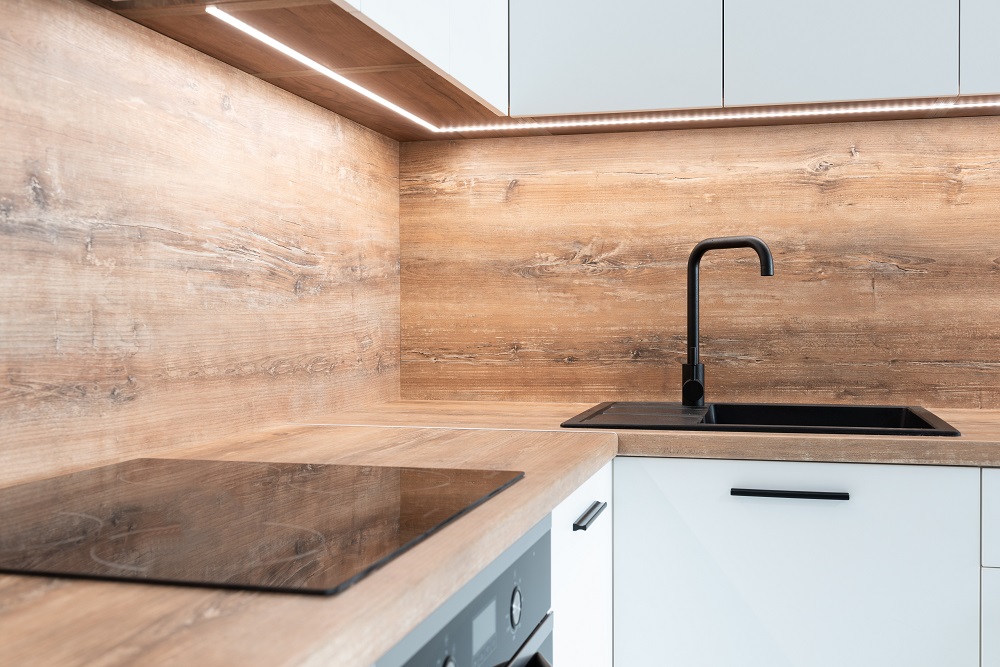The majority of professional plumbers and DIY home-based project enthusiasts have the basin wrench. It’s a tool specifically designed to take off or replace the faucet.
It is able to access nuts beneath the sink and in other places, the standard wrench or pliers aren’t able to reach. However, you might not have a basin wrench and need to take off the faucet in your kitchen.
Kitchen faucets are crucial fixtures.?Without them, sinks, and their surroundings wouldn’t be kept clean.?Cleaning up the sinks could be an effort.?When the time arrives, you are required to take off the kitchen faucet.?You may need to fix, clean, or replace it.

How to remove a Kitchen Faucet Without Using a Basin Wrench:
Even with no basin wrench, the process of removing them is simple. The trick is to remove the nuts using tools other than the basin wrench. Here’s how to do it;
Step 1: assemble the required materials
If you don’t have the basin wrench, you’ll require additional tools and other items that will assist you in removing the faucet in your kitchen.?Gather the following tools prior to the process of removing the faucet;
Screwdriver
A soft, clean towel or cloth
Channel-lock pliers
Socket wrench
Tape gauge
Grease
Step 2: Shut off the Valves
After assembling all of the items listed above It’s now time to begin the process of removing them. The faucet is usually made up of hot and cold valves. Most often, they are placed underneath the sink or within the cabinet. Find them and shut off the valves to stop the water from running while you take apart the faucet.
Shutting off the valves is an act of precaution. This should be done regardless of any other plumbing works. If not, you’ll not be happy with the water splattering on your kitchen’s floor when doing the work. The time and energy you use in cleaning the mess of water on your kitchen floor are easily avoided!
It is also recommended to put a bucket under your sink or faucet prior to beginning the process of removing it. It can help you get rid of any water left that may spill onto your kitchen floor.
Step 3: Release the Faucet’s Pressure
If the valves are closed take out any pressure inside the faucet. If the faucet is not running it could be filled with air pressure. This type of faucet is difficult to get rid of. Open the faucet to let air escape the faucet.
The faucet should remain open for between 2 and 3 minutes. The pressure of the air will be released which makes it easier to work.
In the process, the faucet gets lighter, and easy to take it off.
Step 4: Disconnect the Water Lines
After taking pressure off the faucet, you must disconnect the kitchen’s water line. This is somewhat more complicated in comparison to the three previous steps but it’s quite simple. Choose the channel lock pliers you want to use and secure them to the water line in your kitchen.
It is best if you took care when the pliers when they were connected to the waterline. In the event of a mishap, you could harm your kitchen’s faucet as well as the waterline. When the faucet is securely connected, take the pliers out with care.
Step 5: Remove the Nuts
The faucet is secured by numerous nuts. After disconnecting all lines that supply water to your kitchen, take out all nuts within the faucet. A socket wrench works great. Sometimes, the nuts could be difficult to take off if they are not changed or maintained over a prolonged time.
If your lock is tightly locked If the bolts are tightly locked, applying some grease to the screws, bolts or nuts can help. The joints of the nuts will become soft, which will allow them to move easily. Use the wrench in a counterclockwise direction to release the screws or nuts.
Remove all nuts one at each at a moment. Set the bolts, screws, and nuts back in a secure location when you are done to ensure that they are not lost.
Step 6: Disconnect and take off the Hose
After you’ve removed all the screws holding the faucet in place then disconnect the hose. Start disconnection from the sink. Pull the faucet back. Congratulations! You’ve successfully retracted your kitchen faucet without the aid of an appliance wrench for the basin.
In the event that your faucet has been damaged, or shows some flaws, you should consider making repairs prior to returning the faucet. It is also possible to replace it with a new one. If it is dirty, take out all dirt and debris and clean it using an easy brush or scrubbing pad in warm water laced with dish soap. Clean up mineral deposits and rust by using vinegar.
Conclusion
As we have explained, removing a kitchen faucet with the basin wrench is easy. This is because it’s specifically designed to take out or repair the faucet. However, this doesn’t mean it isn’t possible to remove an entire faucet without the help of an appropriate basin wrench.
The step-by-step guide has shown the possibility of being able to take a faucet off without using a basin wrench. Be sure to not skip on every step. Otherwise, you’ll not succeed. It will also help to be careful when working with the tools, as they could cause damage to the faucet.
If the screws, bolts or nuts are tight Apply some oil to help loosen the nuts, instead of pressing harder. Make sure to shut off the water valve and disconnect the water line prior to the removal procedure.

As the editor of the blog, She curate insightful content that sparks curiosity and fosters learning. With a passion for storytelling and a keen eye for detail, she strive to bring diverse perspectives and engaging narratives to readers, ensuring every piece informs, inspires, and enriches.









